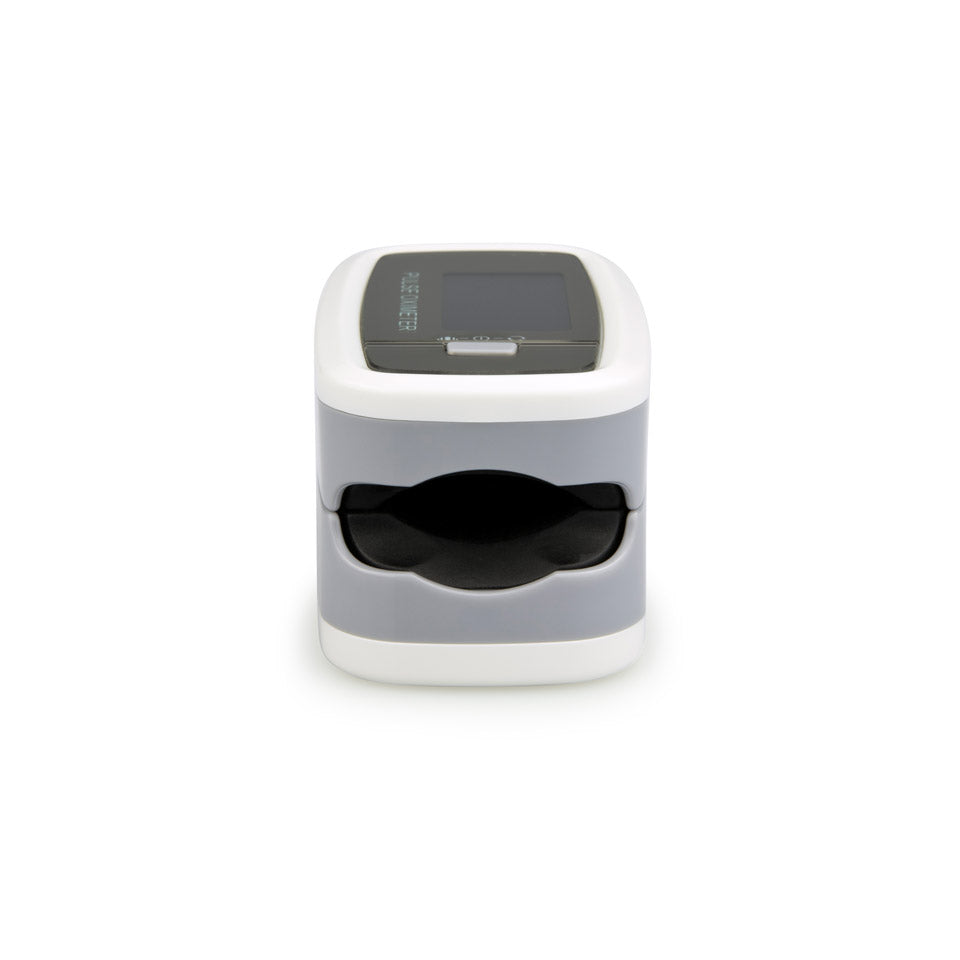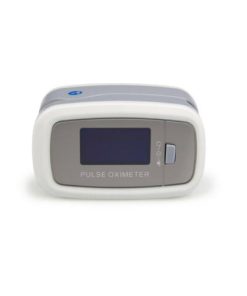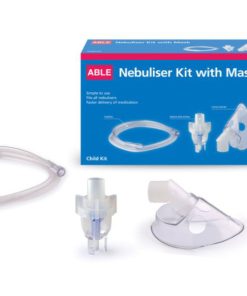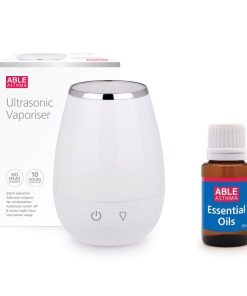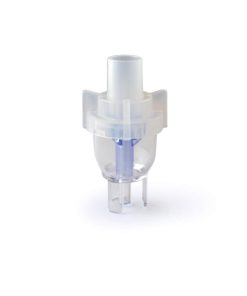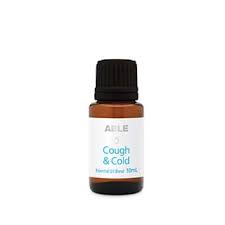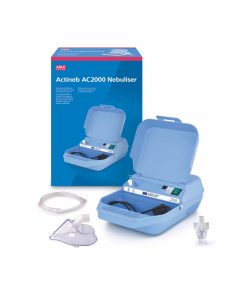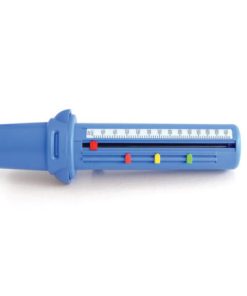Able Fingertip Pulse Oximeter Able Asthma
$ 59,95 $ 29,98
Able Fingertip Pulse Oximeter uses Photoelectric Oxyhemoglobin Inspection Technology to measure oxygen saturation and pulse rate through the finger. Suitable for use by families, hospitals, oxygen bars, community healthcare, and sport performance monitoring.
Used to measure oxygen saturation and pulse rate through the finger. Suitable for families, hospitals, oxygen bars, community healthcare, and sport performance monitoring.
FEATURES
- Integrated with SpO2 probe and processing display module
- Small volume, lightweight and convenient for carrying
- Simple operation
- Low power consumption
- SpO2 value display
- Pulse rate value display, bar graph display
- Pulse waveform display
- The display mode and screen brightness can be changed
- Low-voltage indicator
- Automatic power off function within 5 seconds after the finger is removed
- Display format can be saved after power off
Purpose and Uses
The purpose of pulse oximetry is to check how well your heart is pumping oxygen through your body.
It may be used to monitor the health of individuals with any type of condition that can affect blood oxygen levels, especially while they’re in the hospital. These conditions include:
- chronic obstructive pulmonary disease (COPD)
- asthma
- pneumonia
- lung cancer
- anemia
- heart attack or heart failure
- congenital heart defects
There are a number of different common use cases for pulse oximetry, including:
- to assess how well a new lung medication is working
- to evaluate whether someone needs help breathing
- to evaluate how helpful a ventilator is
- to monitor oxygen levels during or after surgical procedures that require sedation
- to determine how effective supplemental oxygen therapy is, especially when treatment is new
- to assess someone’s ability to tolerate increased physical activity
- to evaluate whether someone momentarily stops breathing while sleeping — like in cases of sleep apnea — during a sleep study
DIRECTION
Pulse oximetry may be used in both inpatient and outpatient settings. In some cases, your doctor may recommend that you have a pulse oximeter for home use.
The pulse oximetry process is as follows:
-
Most commonly, a clip-like device will be placed on your finger, earlobe, or toe. You may feel a small amount of pressure, but there is no pain or pinching. In some cases, a small probe may be placed on your finger or forehead with a sticky adhesive. You may be asked to remove your fingernail polish if it’s being attached to a finger.
-
You’ll keep the probe on for as long as needed to monitor your pulse and oxygen saturation. When monitoring physical activity capabilities, this will be during the extent of the exercise and during the recovery period. During surgery, the probe will be attached beforehand and removed once you’re awake and no longer under supervision. Sometimes, it will only be used to take a single reading very quickly.
- Once the test is over, the clip or probe will be removed.
WARNING
Read the warnings before purchase. Incorrect use may be harmful. Follow the directions for use.
Quick Shipping and Professional Packaging
We provide a variety of shipping options due to our long-running partnerships with UPS, FedEx and DHL. Our warehouse staff will package all goods to our exacting requirements. Your goods are thoroughly checked and secured properly prior to shipping. We ship to thousands clients each day across multiple countries. This shows that we're committed to being the largest online retailer in the world. Both Europe and the USA have distribution and warehouse centres.
Note: Orders that include more than one item will be assigned a processing date depending on the item.
Prior to shipment, we will inspect thoroughly the items you've purchased. The majority of orders are shipped within 48 hours. The expected delivery time will be between 3-7 days.
Returns
We don't control the inventory in our factory and warehouse. This means that the actual stock could change at any time. Be aware that your order may be out of stock when the order has been placed.
Our policy is valid for 30 days. If you have passed 30 days in the past since you purchased and we are unable to offer you a refund or exchange.
The item cannot be used and in its original condition. It must also still be in the original package.
Related products
Asthma Health Care: Nebuliser Kit with Mask
Able Asthma Child Nebuliser Kit Universal with Child Mask Able Asthma
Health Care: Ultrasonic Vaporizer + Oil Everyday Health
Health Care: Vapour Mist Oil
Health Care: Ultrasonic Vaporizer + Oil Hay Fever
Able Asthma Ultrasonic Vaporizer + Able Oil Hay Fever Blend 10ml Able Asthma
Health Care: Ultrasonic Vaporizer + Essental Oil
Asthma Health Care: Nebuliser Bowl Vixone
Health Care: Essental Oil
Able Cough& cold l Oil For Ultrasonic Vaporiser 15ml Able Asthma
Asthma Health Care: Actineb AC2000 Heavy Duty Nebulizer
Health Care: Oil Everyday Health
Asthma Health Care: Actineb Mini Nebuliser
Health Care: Oil Hay Fever Blend
Asthma Health Care: Nebuliser Kit with Mask
Able Asthma Nebulizer Kit Universal with Adult Mask Able Asthma
Health Care: Infrared Forehead Thermometer
Health Care: VapourMist Humidifier & Oil
Able Asthma VapourMist Humidifier + Able Asthma VapourMist Oil 125ml Pack Able Asthma
Asthma Health Care: Peak Flow Meter

